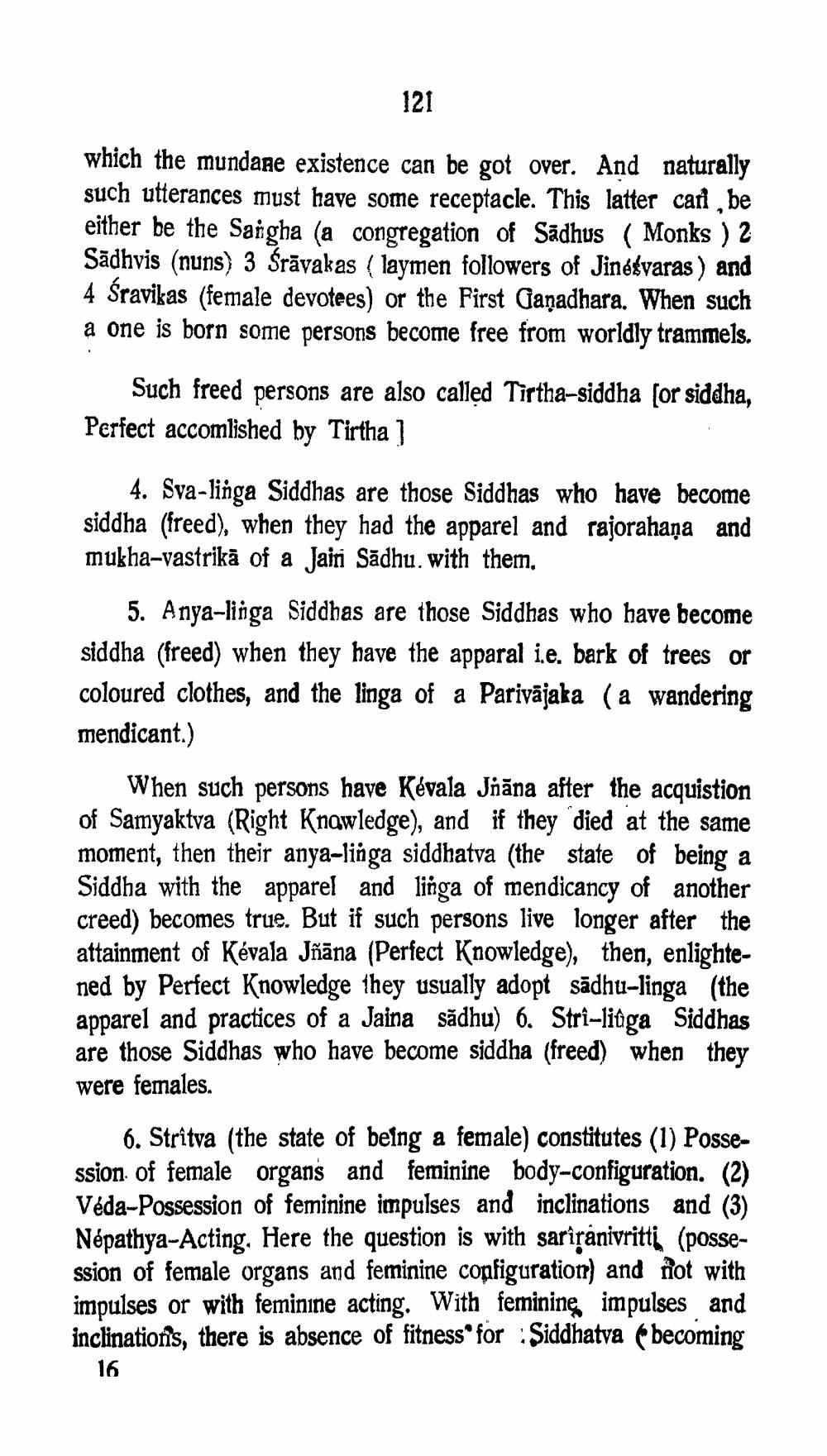________________
1221
which the mundane existence can be got over. And naturally such utterances must have some receptacle. This latter carl, be either be the Sangha (a congregation of Sadhus (Monks ) 2 Sadhvis (nuns) 3 Śrāvakas (laymen followers of Jiné varas) and 4 Śravikas (female devotees) or the First Gaṇadhara. When such a one is born some persons become free from worldly trammels.
Such freed persons are also called Tirtha-siddha (or siddha, Perfect accomlished by Tirtha]
4. Sva-linga Siddhas are those Siddhas who have become siddha (freed), when they had the apparel and rajorahaṇa and mukha-vastrika of a Jairi Sadhu. with them.
5. Anya-linga Siddhas are those Siddhas who have become siddha (freed) when they have the apparal i.e. bark of trees or coloured clothes, and the linga of a Parivajaka (a wandering mendicant.)
When such persons have Kévala Jnana after the acquistion of Samyaktva (Right Knowledge), and if they died at the same moment, then their anya-linga siddhatva (the state of being a Siddha with the apparel and linga of mendicancy of another creed) becomes true. But if such persons live longer after the attainment of Kévala Jñana (Perfect Knowledge), then, enlightened by Perfect Knowledge they usually adopt sadhu-linga (the apparel and practices of a Jaina sădhu) 6. Strî-litga Siddhas are those Siddhas who have become siddha (freed) when they were females.
6. Stritva (the state of being a female) constitutes (1) Possession of female organs and feminine body-configuration. (2) Véda-Possession of feminine impulses and inclinations and (3) Népathya-Acting. Here the question is with sariranivritti (possession of female organs and feminine configuration) and not with impulses or with feminine acting. With feminine, impulses and inclinations, there is absence of fitness for Siddhatva (becoming
16




